






 |
|||||||
 |
 |
 |
 |
 |
|||
 |
|||||||
|
Victrola: The birth of home audio There is really something special about winding the crank up on an old Victrola and setting the platter in motion. It’s almost what I imagine it would be like priming the prop of a biplane, hopping back into the cockpit and letting go. In this case, the music soars out of a mechanical folded horn with surprising vitality and energy. These old 78s can really sing out of a steel-needled Victrola, particularly if they are in better condition and aren’t played out. And the coolest part is that this is exactly the same sound your great grandparents grooved out to while making out in the parlor back in the summer of 1923. The Victor Talking Machine, the Victrolas, were the home audio solution of 1910-1925 for families with means. Fully mechanical, hand-wound machines, these old Victrolas are wonders of the early 20th century, and are still a lot of fun today. And if pure enjoyment of listening to music is the key motivator, these are fun in a way that no modern amp is going to get close to, because high fidelity is not at all a part of the equation. To put it bluntly, a 78 played through a steel needle Victrola makes an 80’s boombox playing a worn out cassette tape sound like probably the finest sound system of all time. 78 rpm records first appeared around 1910, and finally went out of production in the US sometime in the late 1950s (40+ years of music), but were still being pressed by a few companies worldwide until the mid-70s. The earliest discs were one sided, but after 1915 or so they are double sided. Until the 30’s they were made from shellac, which is both heavy and fragile. 78s don't take much abuse; they chip, crack, fragment or outright shatter when treated roughly, and what a tragedy that is. One tip I’ll give that I have learned the hard way is to stop the platter when changing records. Seems obvious, right? I’m lazy and its a small hassle, but after breaking a few I realized its necessary. 78’s are by and large all singles, like giant 45s they have one song on each side. They demand your attention. Unlike an LP or a CD these 78 are short form, they play out in 2-3 minutes and its an active session. You are up and down and up and down again putting on and taking off records, maybe dancing around a bit if the music and mood are right. And the music can be interesting; some of it is actually very enjoyable, but before 1920 or so pickings are a little thinner. But a few sessions with the Victor Talking Machine makes you a fan of the Foxtrot! And I've enjoyed the experience so much that I've set up my Rek O Kut turntable for 78 duty with a vintage stylus on the Weathers arm. I bought my first Victrola in 2010, a somewhat beat up 1916 model XX-VI, and have been enjoying it ever since. It came with 20-30 records, and since then I’ve picked up 5-600 more. Overall, I think its remarkable how well these old machines have stood up to the test of time. I purchased mine off the front porch of a farmhouse in rural Virginia where it had been forgotten for a long time. Its evident that it has been flooded at least once in its past. The old soldier is rough all over; the outside cabinet shows plenty of alligatoring in the finish and one leg has been re-glued at some point. But opening up the lid reveals an almost pristine interior, very much how it looked when its first owner opened it up more than 100 years ago. Winding it shows at least one rough spot in its spring, but it soars right past it in playback with just a sight bounce and bump from somewhere deep within, the music never pausing or missing a beat. I added a portable, table top 1923 machine at the beginning of the Pandemic and its been a lot of fun too. Playing the old shellacs on the 23 while relaxing in the garden is somehow a comforting, life-affirming feeling and it always makes me smile! My 1923 portable Victor is the original ghetto blaster. What a cool item to bring to a picnic or to the beach. Well built and solid, this sets up in a few seconds and sounds powerful. In fact outside it gets loud to the point that a volume control would be a good thing, but alas there is no such luxury. The world just has to deal with Bing Crosby or Al Bowlly belting out their ballad at 85 decibels! Anyway, it's a fun item that gets (and deserves) a lot of attention. I see the Victrola as a useful baseline of home fidelity. If music is the motivation behind all of this equipment, the Victrola certainly offers a uniquely pure level of musical enjoyment. Of course it is severely bandwidth limited. And there is plenty of noise and distortion. But the vitality and immediacy of the reproduction has a factor all its own, and the level of intimacy and interaction with the program material is something that has been lost or forgotten in modern musical reproduction. These machines were made in the hundreds of thousands, they are not rare and there are still plenty of them out in the wild, some in superb almost new looking condition. They need rescuing. If you have the room and the interest, these are a rewarding diversion and a good grounding in what is really important in your musical hobby. Is it the equipment that makes the music so addictive, or the music itself? In its own way, the Victrola just gets out of the way and lets the music shine in a way that electrified amplification doesnt. You can forget about all of the audiofool stuff like cables and frequency response and just get lost in the experience. And isn’t that the real goal of all of this? Folks, these are worth your time if you have the interest. Highly recommended. |
||||||||

|
||||||||
|
The very essence of mechanical musical reproduction. |
||||||||

|
||||||||
|
The Victor Talking Machine VV-XI circa 1916. These Victrolas are very rewarding antiques to own. Most of them still work, and almost all of them are repairable. They inject some good old-fashioned fun into almost any setting, and they are beautiful to look at. A working mechanical machine from 100 years ago (or more). That's priceless. |
||||||||
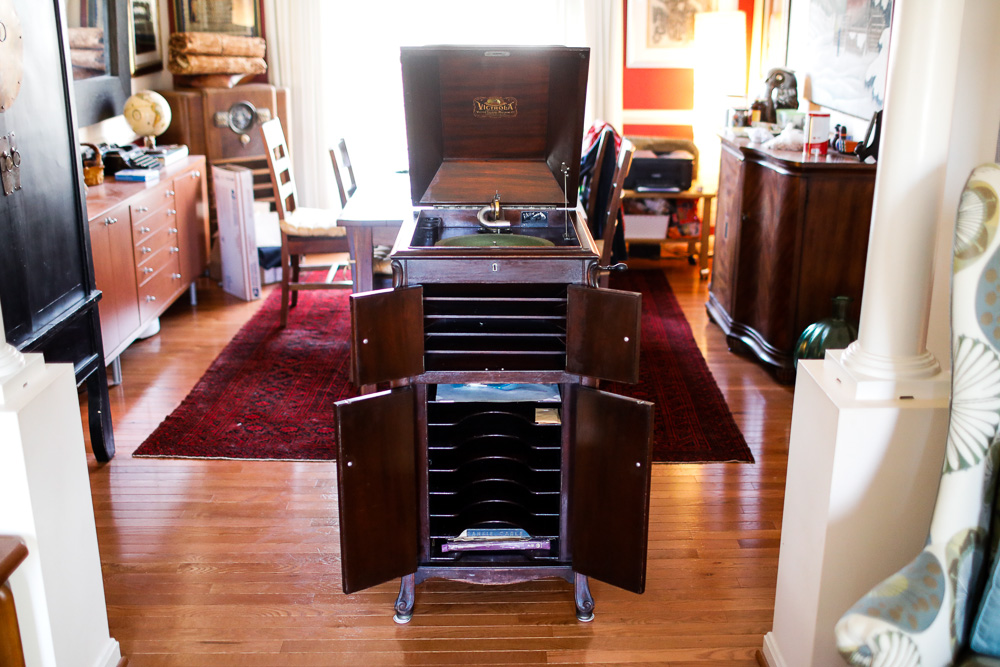
|
||||||||

|
||||||||
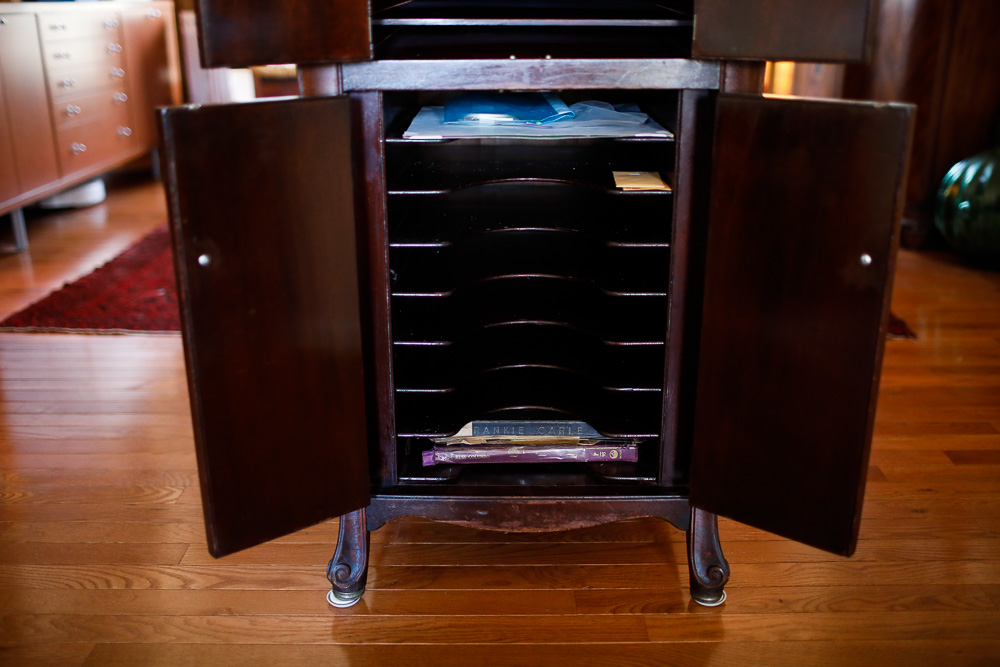
|
||||||||
|
The lower cabinet is intended for record storage. |
||||||||
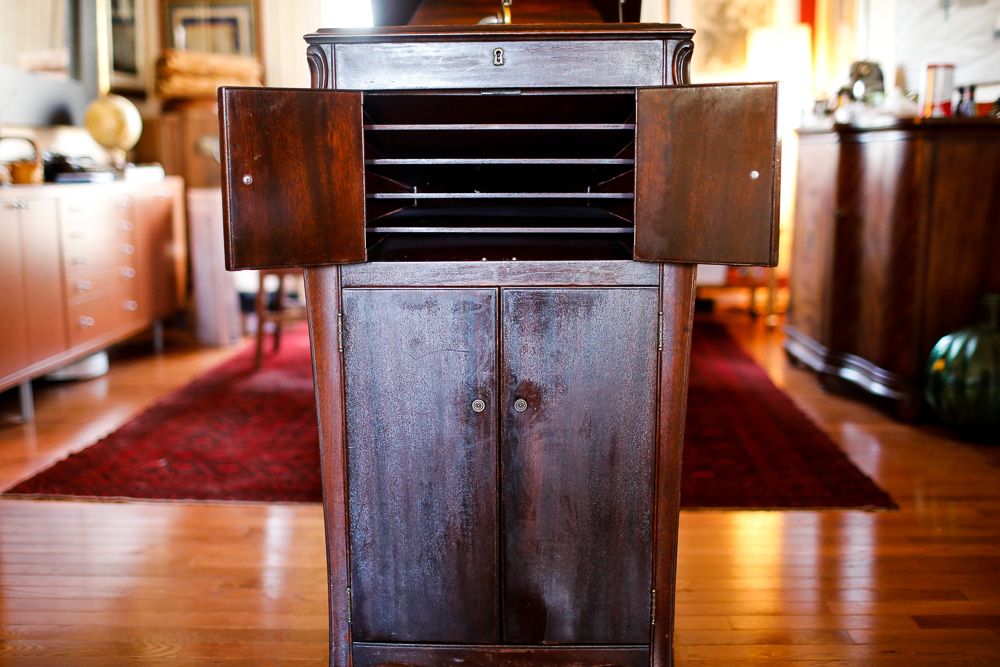
|
||||||||
|
Here is the mouth of the folded horn that mechanically amplifies the sound from the reproducer. |
||||||||
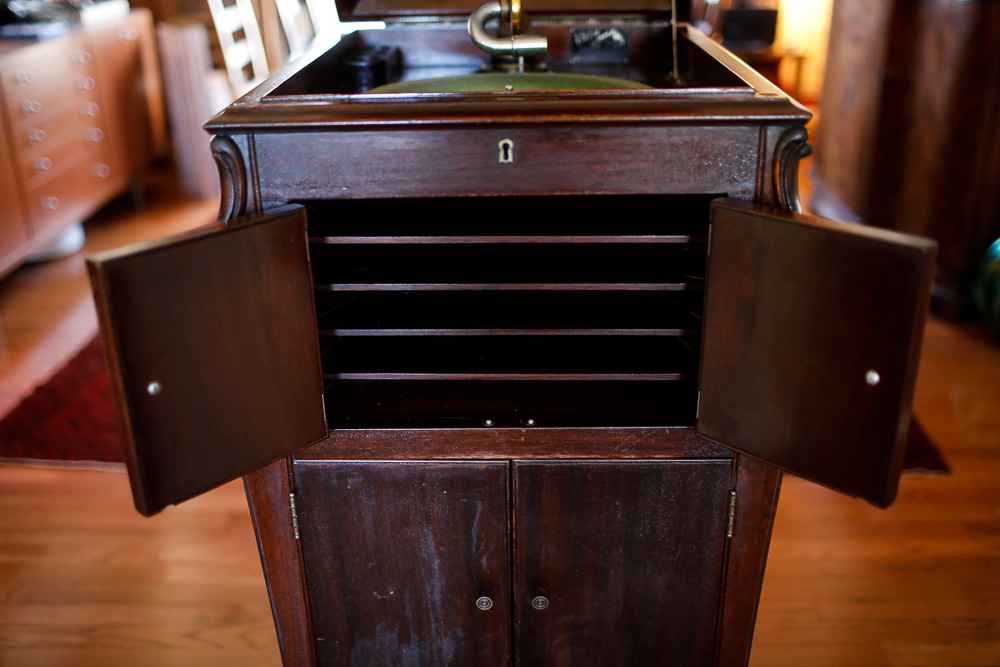
|
||||||||
|
The doors covering the mouth of the horn serve as the volume control, in this case being wide open, its turned all the way up. |
||||||||
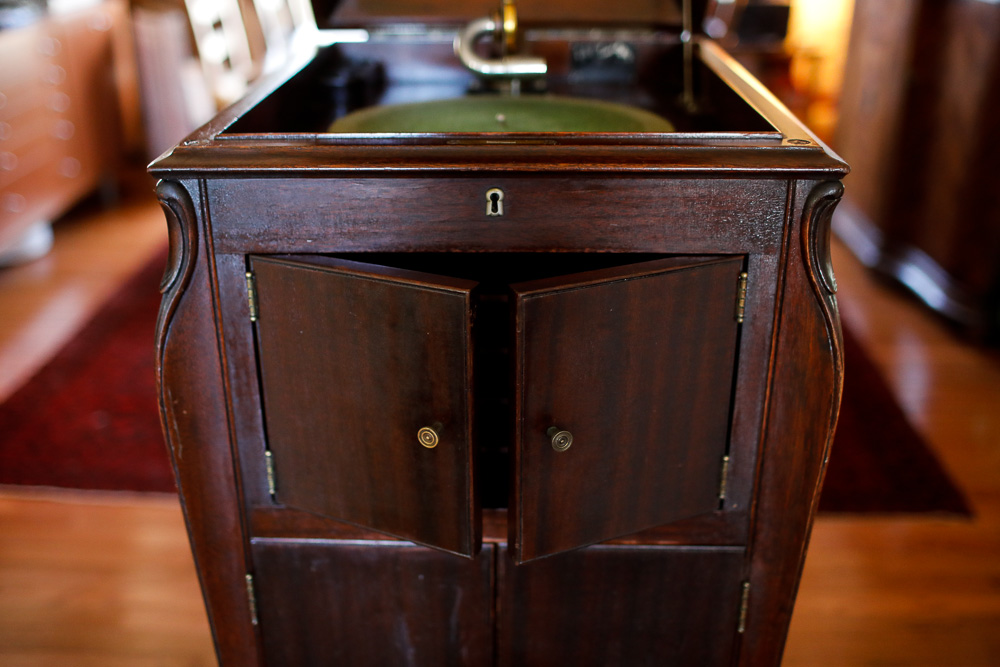
|
||||||||
|
Half closed, the doors limit some of the sound and this is medium volume. |
||||||||
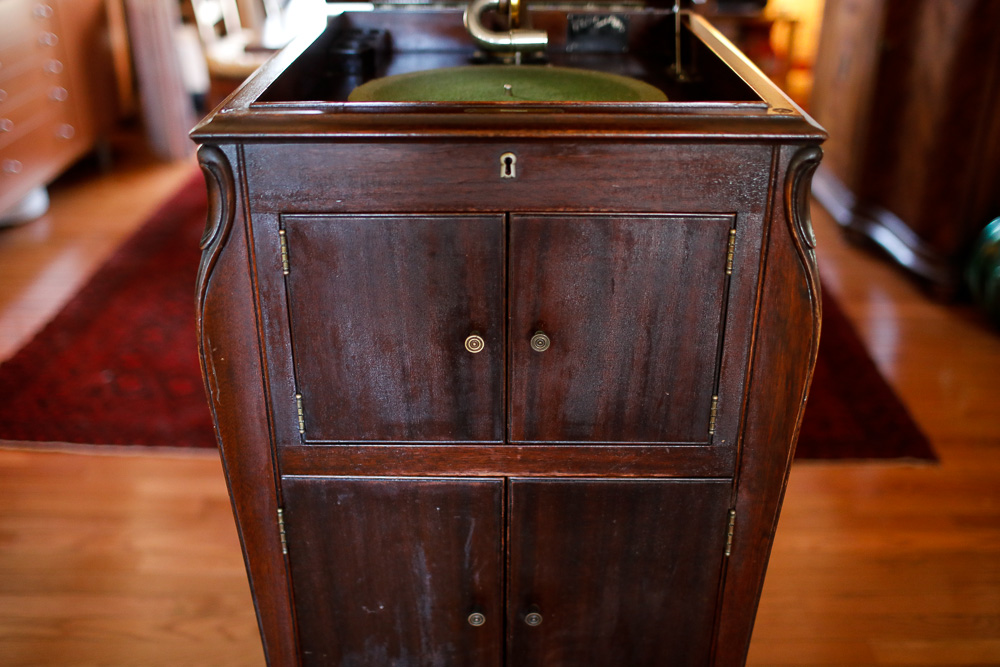
|
||||||||
|
Closed all the way down, the horn is somewhat muted and with the cover closed as well the Victrola would be at its quietest. |
||||||||

|
||||||||
|
Here is a No.2 Reproducer from the 1920’s, in this case retrofitted to an older tonearm. Notice the green felt record mat. Obviously the darker green is from a record sitting on the platter while the sun bleached the outer rim. The cratering is from a century of badly aimed needle drops. This felt is easily replaceable of course, in fact the entire machine could be made to look new, but I like it just the way it is with all of the wear and impact from the many, many people who have enjoyed this one before me, and hopefully will after as well. |
||||||||
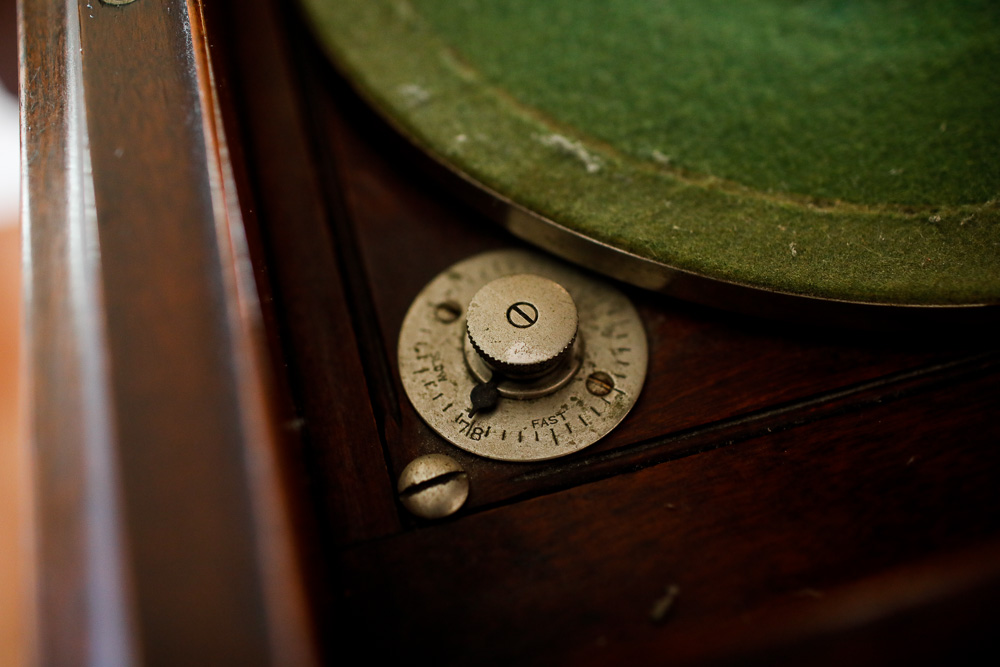
|
||||||||

|
||||||||

|
||||||||
|
The needle well. There are a few varieties of needles used on these machines: soft, normal and loud steel needles being the most common. There are also wooden or bamboo needles that can play at a much lower volume and with less dynamics. The steel needle was intended for one play only, and then should be discarded to avoid damaging the records, but the bamboo variety could be re-sharpened a few times to get a number of plays out of one needle. |
||||||||
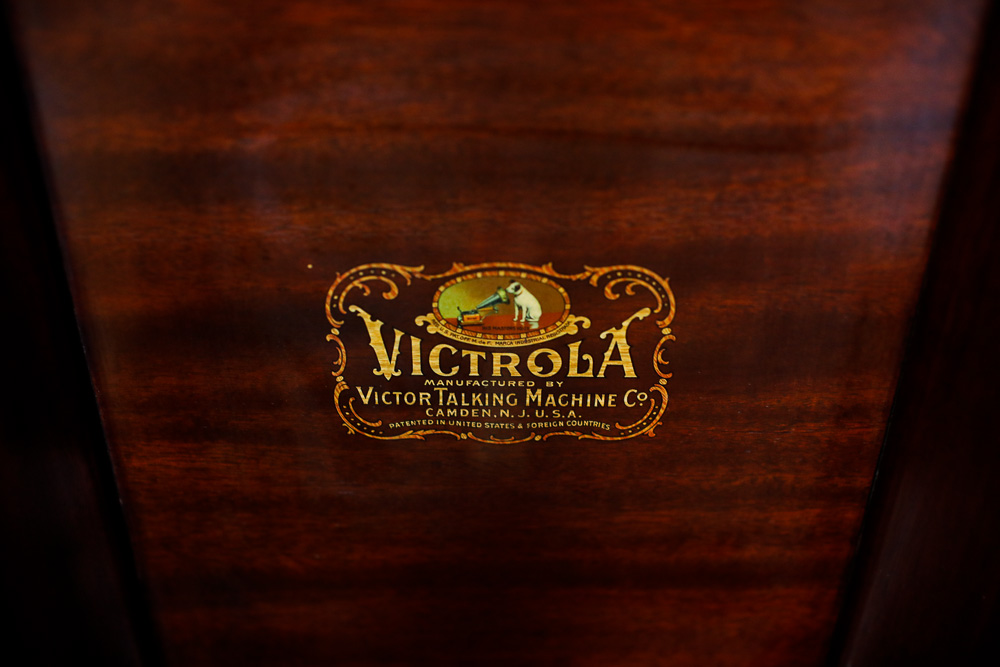
|
||||||||

|
||||||||
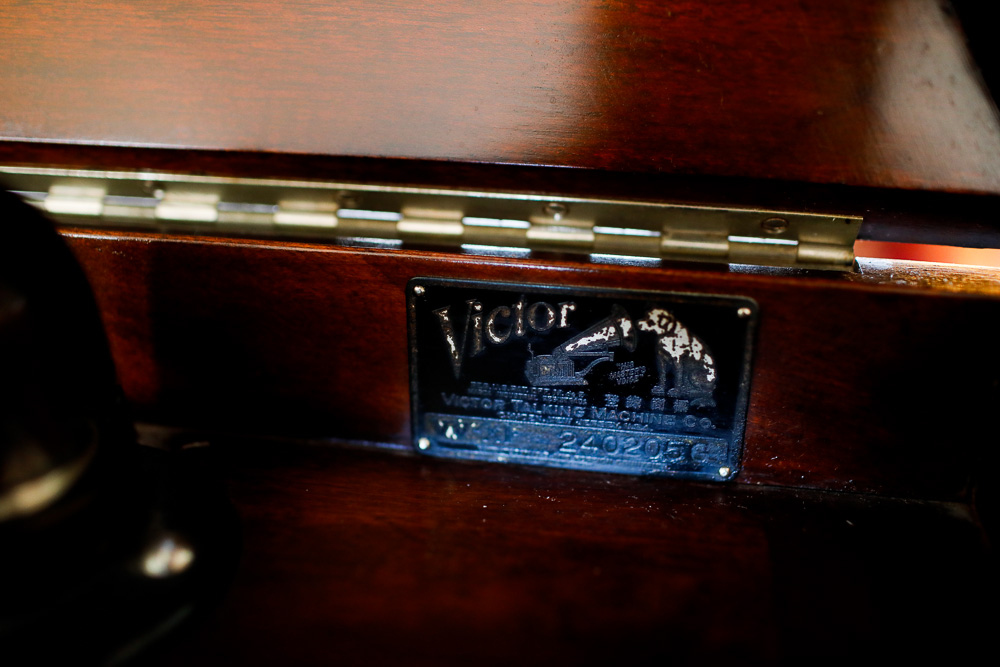
|
||||||||

|
||||||||
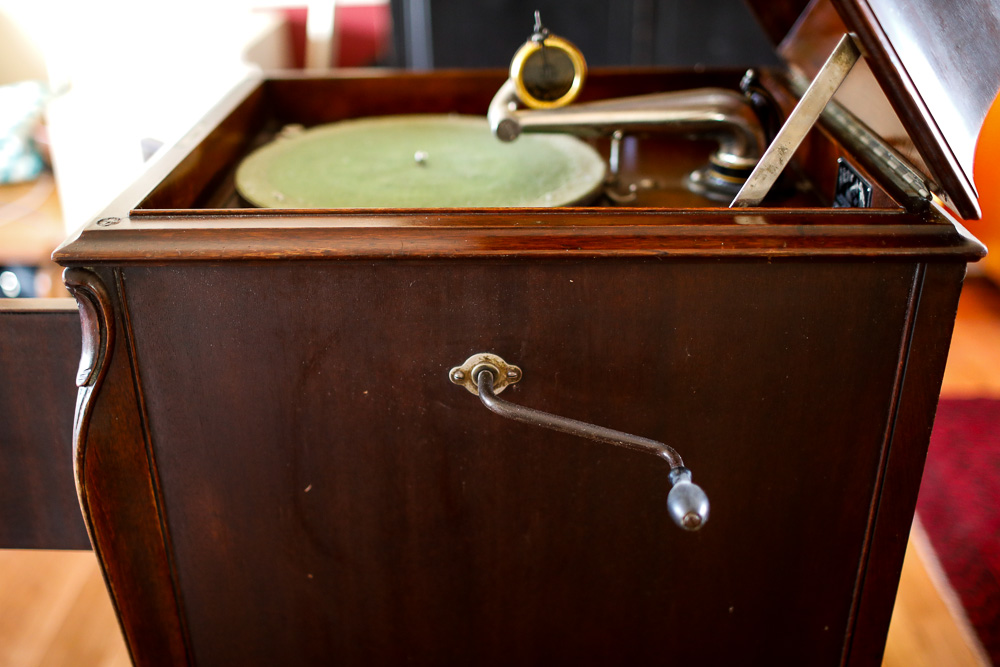
|
||||||||
|
The hand crank is absolutely one of my favorite parts of the Victrola experience! |
||||||||

|
||||||||
|
This is the configuration that sounds best with my VV-XI. |
||||||||
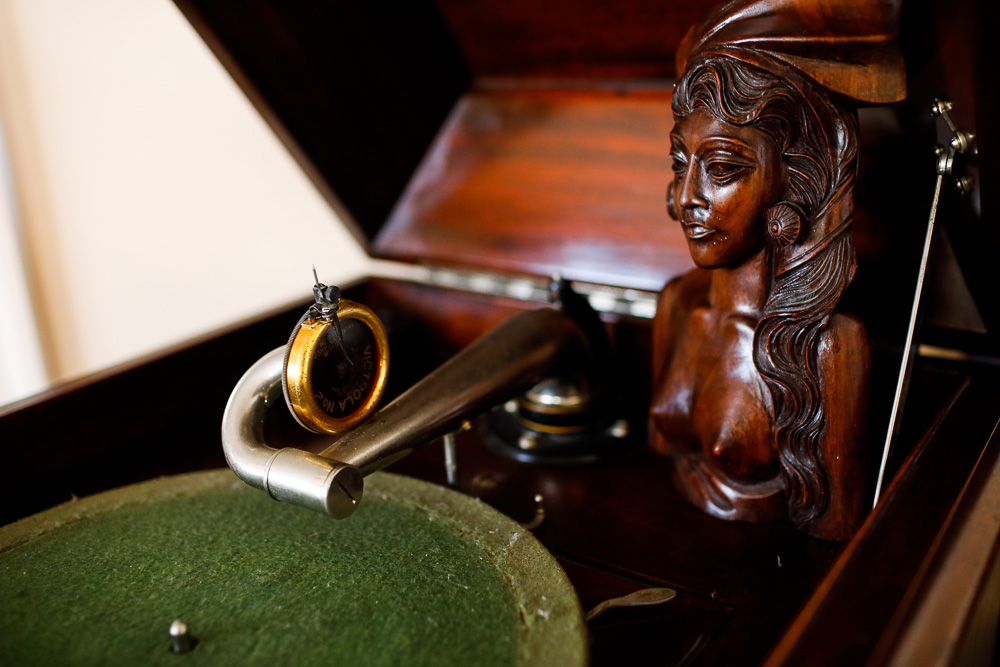
|
||||||||
|
I added this carved bust to dress up my floor standing machine a bit. I think it fits perfectly. |
||||||||
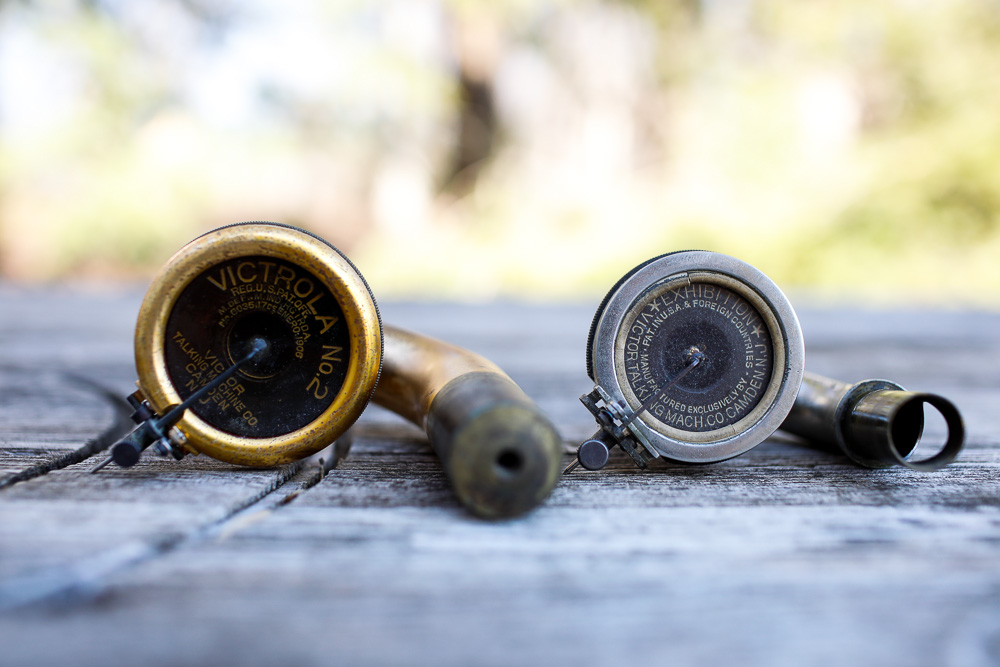
|
||||||||
|
A 1920's improved No.2 reproducer next to a pre-WW1 Exhibition reproducer. You can see that the seals in the Exhibition have decayed and are split open. It still plays in this condition of course, but will sound much better after a rebuild. The gold No.2 has been rebuilt and it's the one I generally use on both machines. |
||||||||
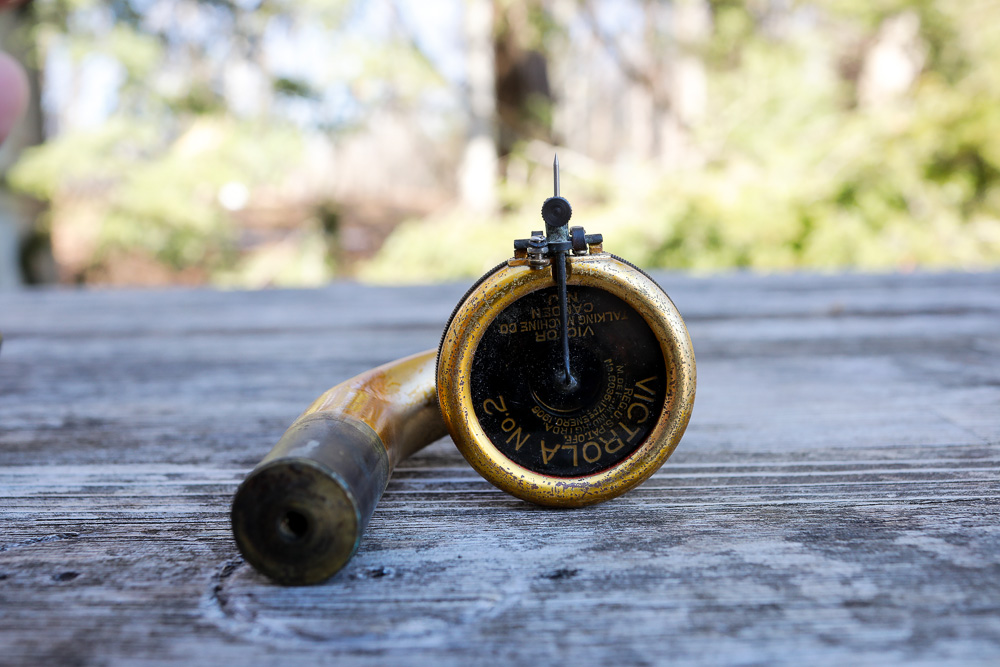
|
||||||||

|
||||||||

|
||||||||

|
||||||||
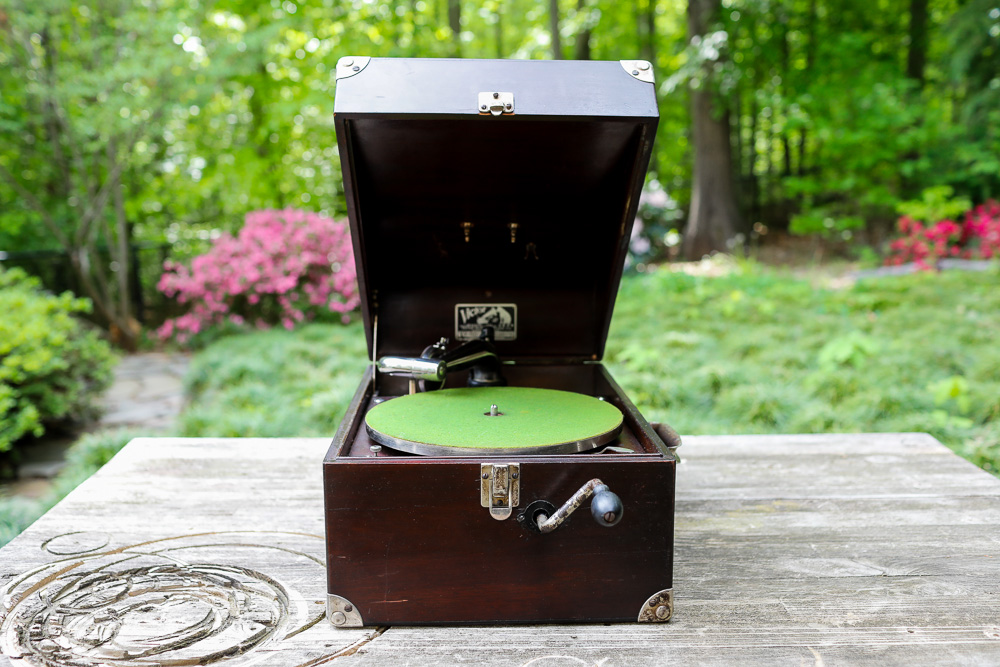
|
||||||||
|
The Victor VV-50, in this case from 1923. Fully portable Victrola power. This is a really fun item to own, it goes anywhere, looks cool even when closed up, and it really surprises everyone with its big bold output. Pure fun. |
||||||||
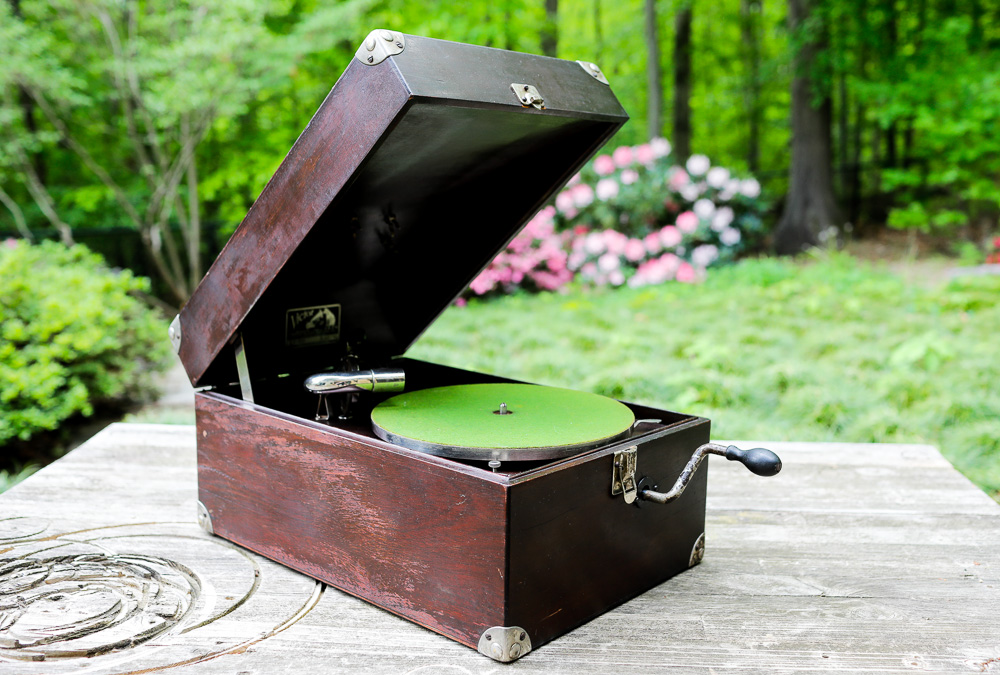
|
||||||||

|
||||||||
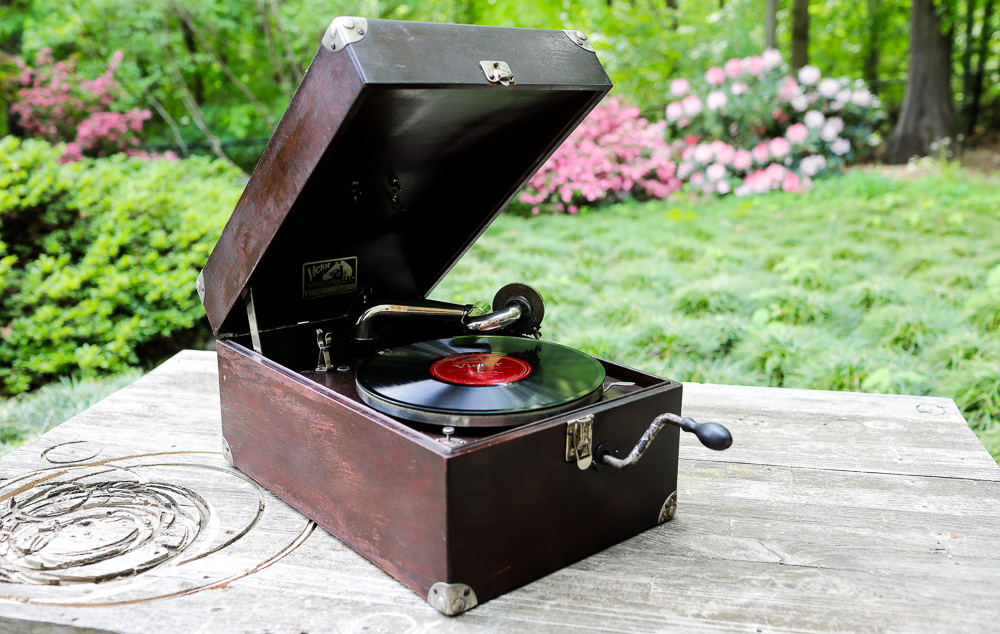
|
||||||||

|
||||||||
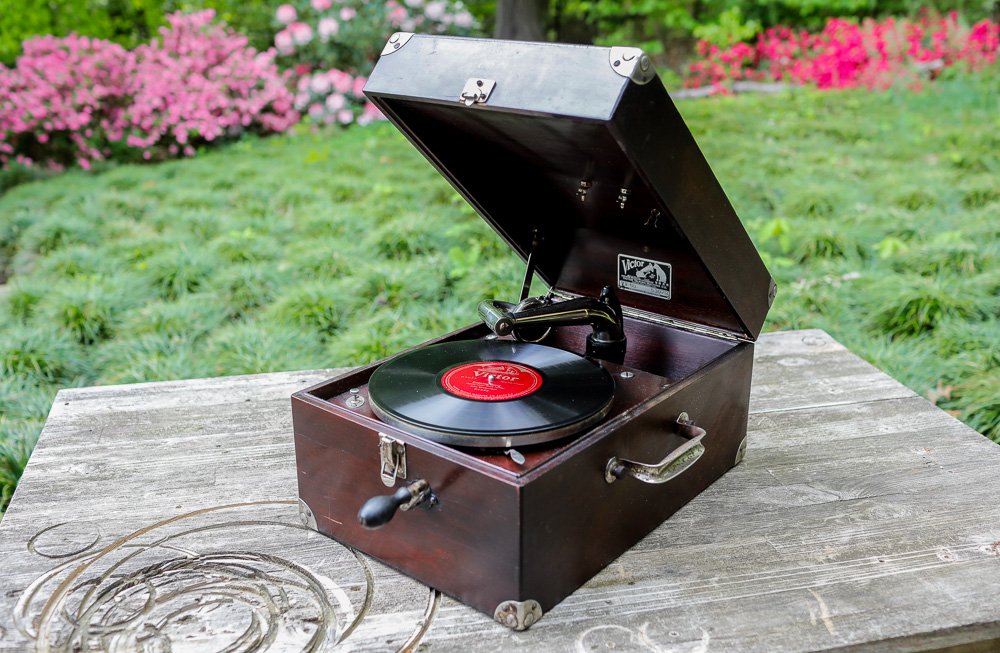
|
||||||||

|
||||||||
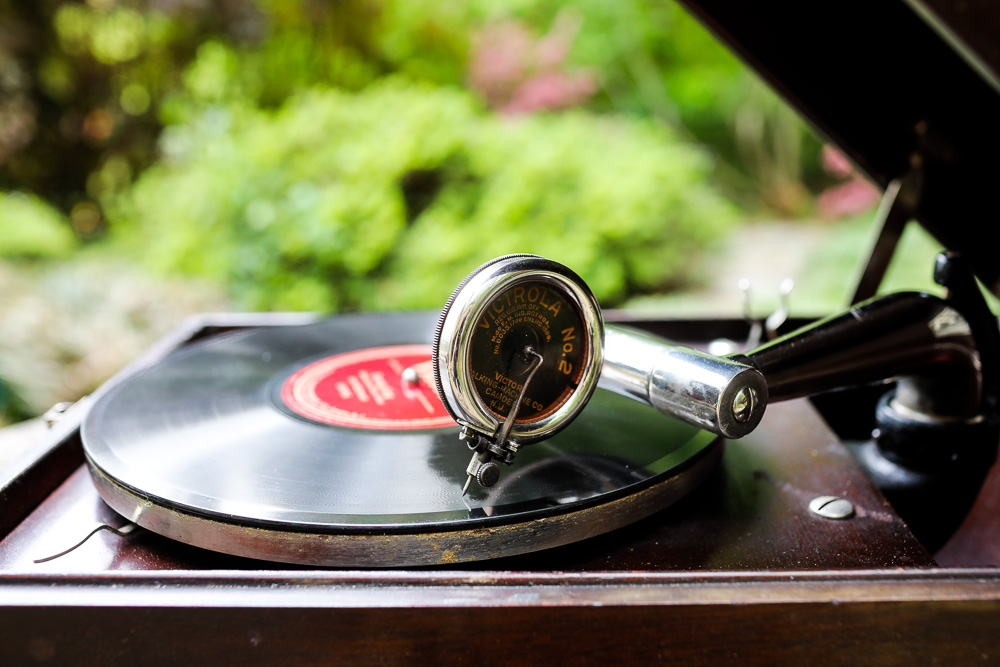
|
||||||||

|
||||||||

|
||||||||

|
||||||||

|
||||||||

|
||||||||

|
||||||||

|
||||||||
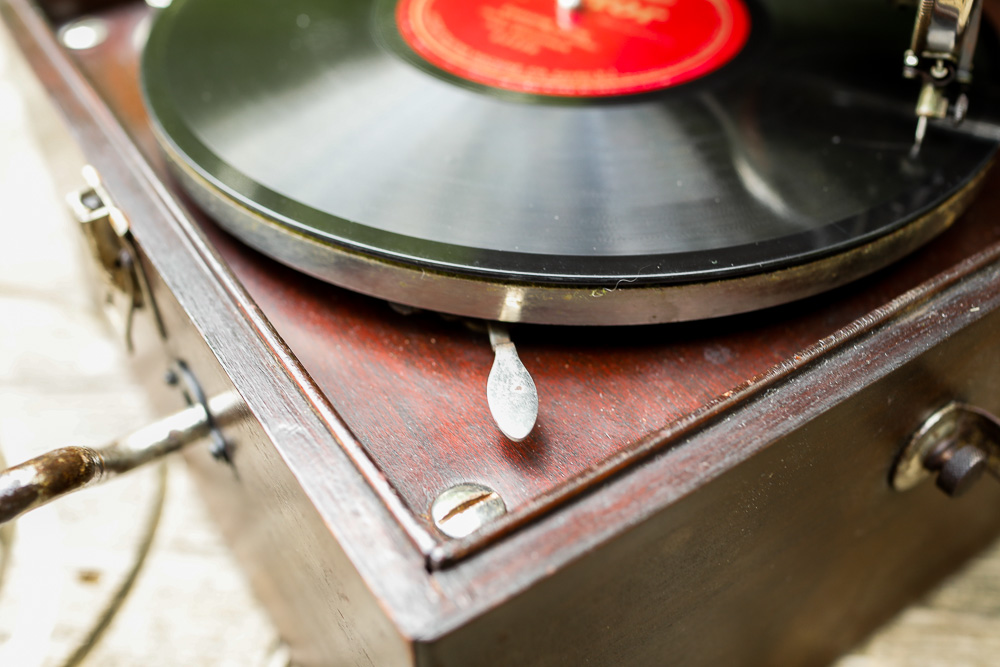
|
||||||||

|
||||||||

|
||||||||

|
||||||||

|
||||||||
|
And now, for something completely different... |
||||||||

|
||||||||

|
||||||||
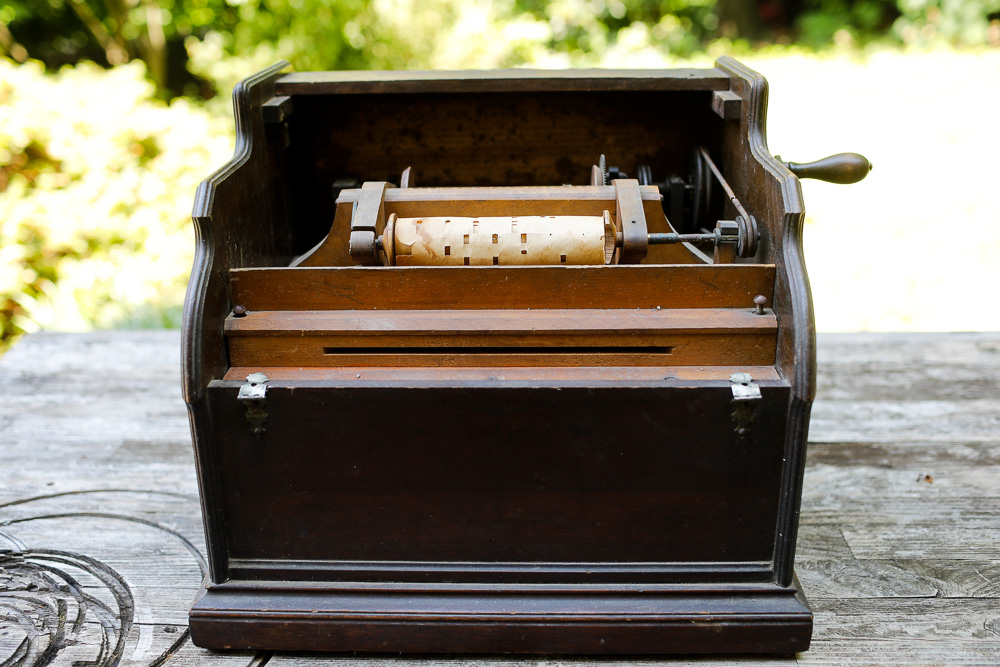
|
||||||||
|
The Celestina Organette, from approximately 1880-1900. This is a hand-cranked organ that pushes air through holes in rolled paper to produce music. Amazing! |
||||||||

|
||||||||

|
||||||||
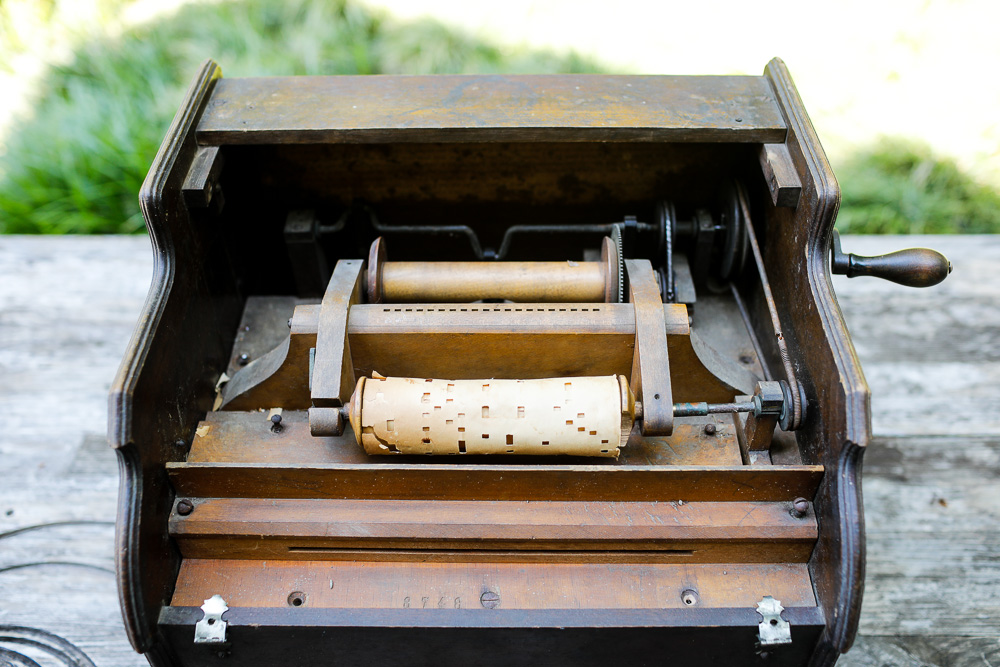
|
||||||||

|
||||||||

|
||||||||
|
Here with an unrolled sheet. These apparently last for 4-6 minutes and often contain more than one popular song from the time. With each roll costing about a half day of the average working man's wage, this was a luxury item for sure! |
||||||||

|
||||||||

|
||||||||
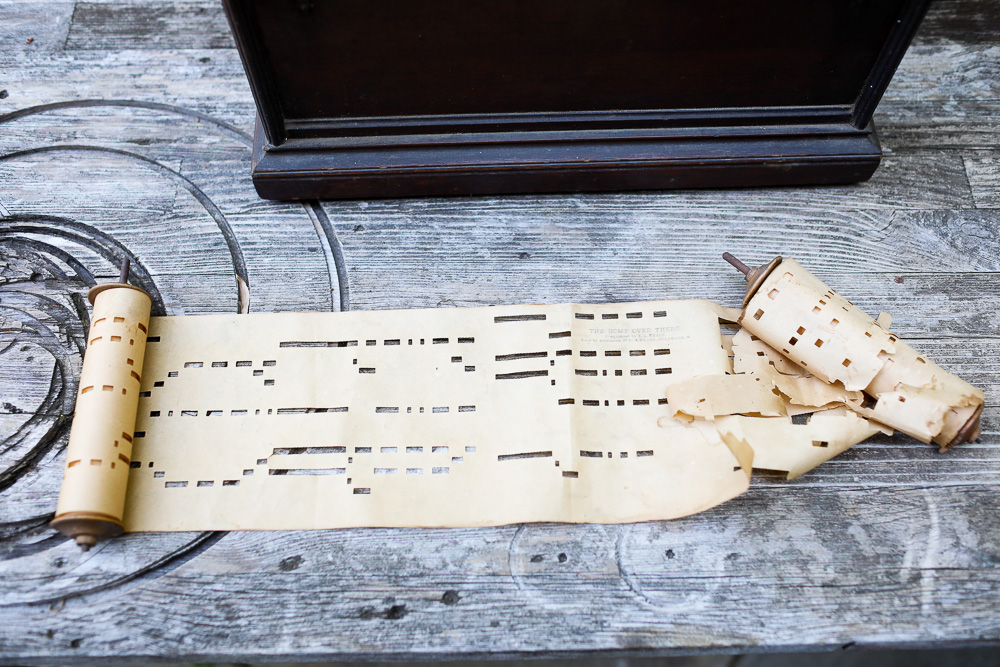
|
||||||||
|
Punch card technology like these 1880’s and 1890’s music rolls are the very birth of software. They were being used to “program” textile machinery, and are some of the very earliest computer codes. Herman Hollerith’s tabulators used punch cards and eventually led to IBM. Really, all modern computers owe their lineage in some part to these obscure old rolls of paper and amazing devices like this Organette. |
||||||||
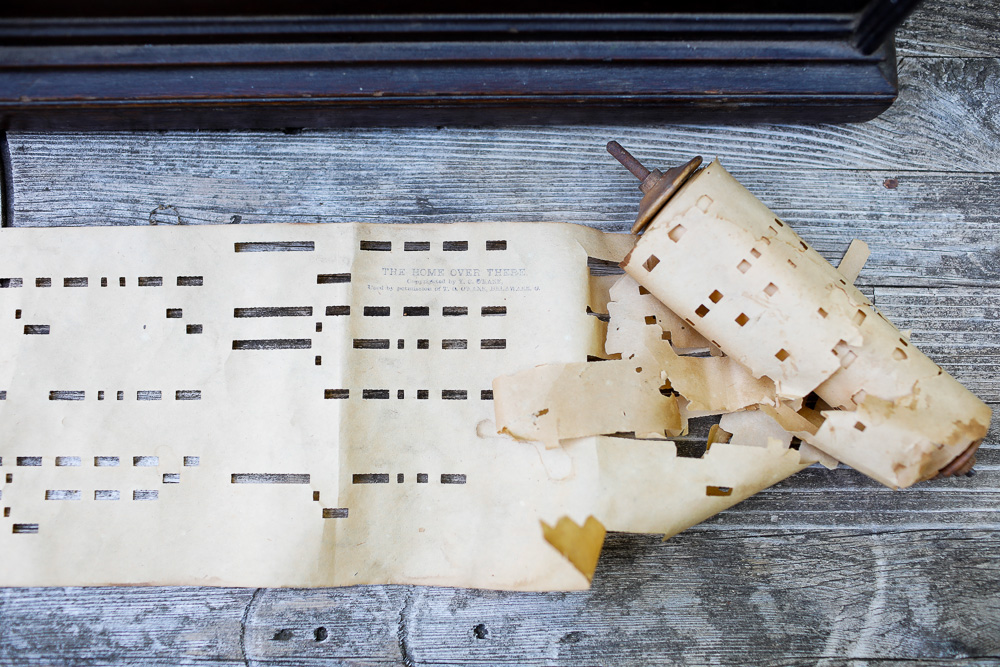
|
||||||||
|
The Home Over There is the first tune on the roll, a Hymn I believe. |
 |
|||||||
 |
 |
 |
 |
 |
|||
 |
|||||||
 |
|||||||